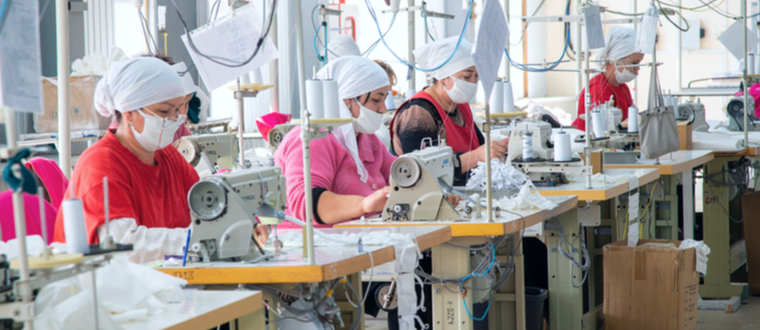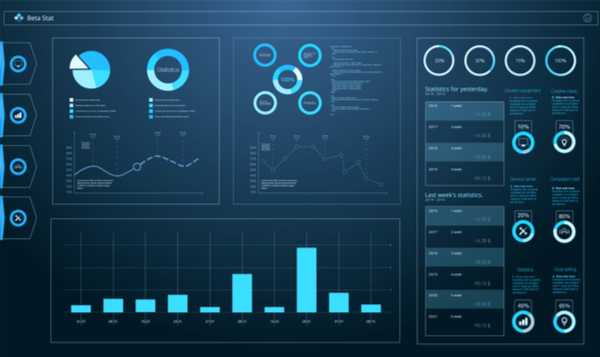Most Chinese factories don’t use data to monitor their performance and guide improvement efforts. Our consultants often get asked, “how many KPIs do we need to improve our factory performance”?
As you can imagine, the answer is not as simple as the question. Let’s start by looking at the definition of what a Key Performance Indicator is:
A Key Performance Indicator (KPI) is a measurable value that demonstrates how effectively a company is achieving key business objective(s). Organizations use KPIs to evaluate their success at reaching targets.
So now we know what a KPI is, let’s look at some different perspectives regarding KPIs and where and how they should be applied and used.
Why KPIs are Important in Manufacturing
Key performance indicators form an important part of the information required to determine and explain how a company progresses towards its business goals.
KPIs should originate from the organization’s mission statement and should align with the overall goals for the business. The next step is to determine what is going to be measured and how it is going to be measured.
Characteristics of KPIs
- Quantitative: They can be presented in form of numbers.
- Practical: They integrate well with present company processes.
- Directional: They help to determine if a company is getting better.
- Actionable: They can be put into practice to effect desired change.
How to Set KPIs for Your Factory in China
It is all very well and good to have a ton of KPIs listed, however, in order for a business to focus on their business goals, they should identify just the critical few KPIs. Make sure the critical few are established and worked towards. Otherwise, time and effort trying to meet the wrong metrics is just adding additional cost to the process.
Make sure everyone understands the metrics they are supposed to drive. (More on this below.) As Dean Spitzer says “People will do what management inspects, not necessarily what management expects”. This is even more true in China!!

Developing Manageable Manufacturing KPIs
It has been scientifically proven that the brain can retain up to three numbers, any more than that the retention rate diminishes. Therefore, three is the magic number. Having said that, an organization clearly should have more than just three KPIs. The idea is to optimize the critical few into the top three and this principle can be implemented for each category or department within the organization.
Any more than three KPIs per category can become too much work to manage and can start to become a burden to keep onto of the data and reporting systems. If this occurs, there is a probability that measuring and reporting activities will slowly decrease and eventually stop.
The Importance of Reporting Graphs & Dashboards

Again, the principle here is to keep it as simple as possible. Easy to read and understandable graphs allow every employee to view and understand the data without getting confused. Having graphs or dashboards that have three colors indicating the status of KPIs not only provides clear and simple information but it is more than likely that employees will actually stop and take note of the data.
Ensuring Long-Term Sustainability
Make sure the senior management are engaged in the system and make sure they are using the KPIs for educational purposes and NOT score keeping or competition rating. From a senior management point of view, the only way to ‘get results’ is through the people within the business.
One last note on senior management involvement when it comes to ‘getting their hands dirty’ is the only way to really find out what is going on is go to the place where the action is taking place. In China, most managers stay in their office (as shown in this related infographic).
Differentiating Between Leading Indicator vs. Lagging Indicator
- Leading Indicator
A leading indicator is a metric that can be monitored and a change can be observed while the process is taking place, for example the cycle time to complete a task or the fill rate of containers or output rates. - Lagging Indicator
A good example of a lagging indicator is on-time delivery; the event has passed before the data is available.
The idea is that Lagging Indicators without Leading Indicators tell you nothing about how the outcomes will be achieved, nor can you have any early warnings about being on track to achieve your strategic goals.
Similarly, Leading Indicators without Lagging Indicators may enable you to focus on short-term performance, but you will not be able to confirm that broader organisational outcomes have been achieved. Leading Indicators should enable you to take pre-emptive actions to improve your chances of achieving strategic goals.
Ian J Seath, Owner/Director of Improvement Consulting Ltd.
'Lead vs. Lag Indicators'
Common Manufacturing KPIs for Chinese Factories to Track
1. On-Time Delivery
Percentage of orders completed on time (On-Time Units ÷ Total Number of Units)
This is a common KPI across the manufacturing industry but what most organizations get wrong is that they include activities that don't reflect the overall timing of their production. A simple way to determine what should be measured:
"Only measure what you are in control of."
So the on-time delivery performance should be based on when you received a purchase order to the time the order leaves the load dock of the factory. This should be measured against what has been stated to the customer from a delivery time point of view.
2. Capacity Utilization
Percentage of potential capacity actually utilized (Actual Output ÷ Potential Output × 100)
This measures the rate at which your factory is using its installed productive capacity.
When the percentage goes down (e.g. due to machines breaking down or remaining idle), it should give you a clear indication that there is either capacity to produce more or that your operations are experiencing slack. However, a higher capacity rate will mean a lower cost per unit.
While it is impossible to reach the full capacity rate of 100%, it is overall a good metric to understand your operating efficiency and cost structure.





